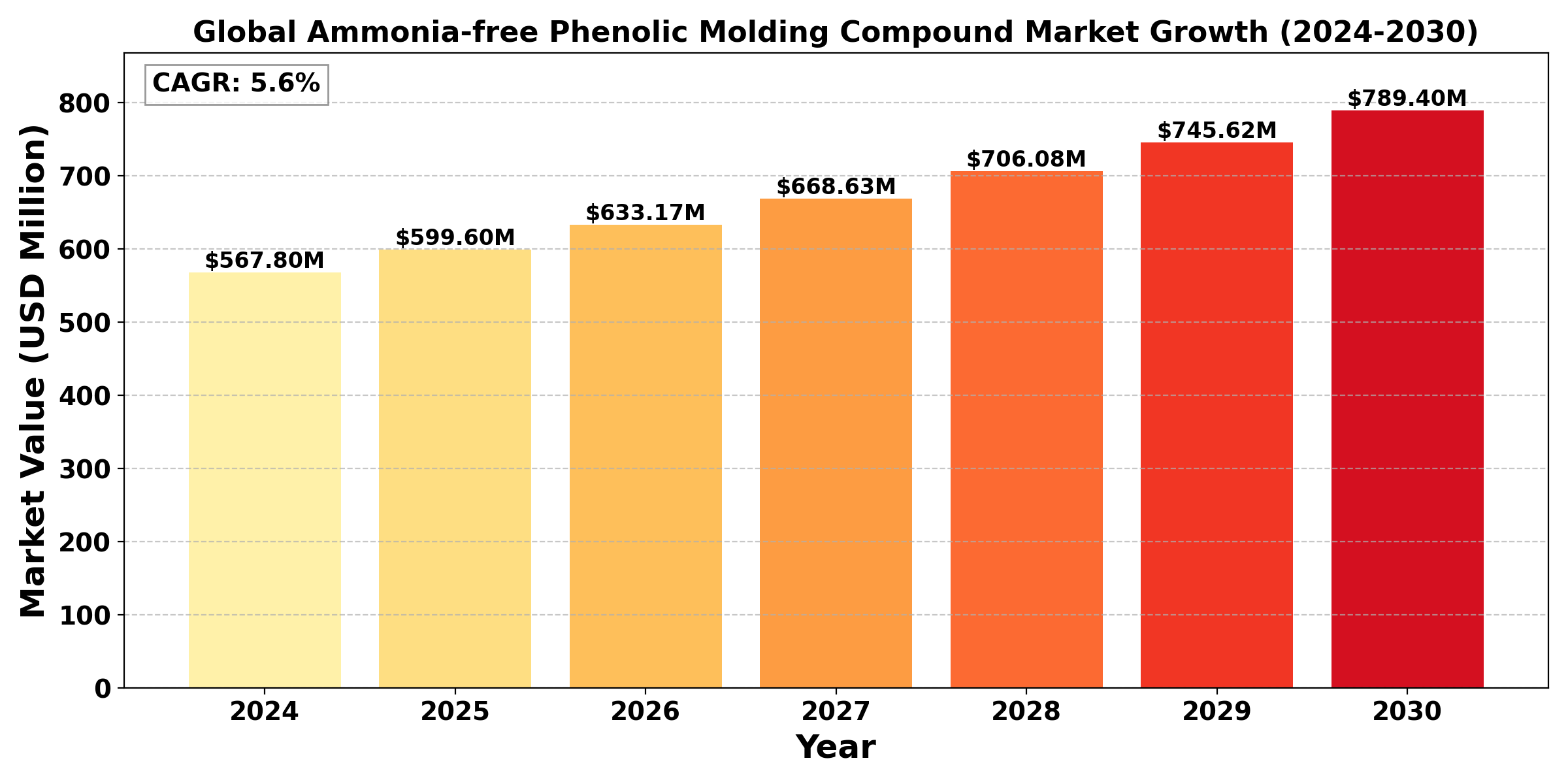TOP CATEGORY: Chemicals & Materials | Life Sciences | Banking & Finance | ICT Media
The "Global Ammonia-free Phenolic Molding Compound Market" size was valued at US$ 567.8 million in 2024 and is projected to reach US$ 789.4 million by 2030, at a CAGR of 5.6% during the forecast period 2024-2030.
The "United States Ammonia-free Phenolic Molding Compound Market" size was valued at US$ 156.7 million in 2024 and is projected to reach US$ 212.3 million by 2030, at a CAGR of 5.2% during the forecast period 2024-2030.
Ammonia-free Phenolic Molding Compounds are thermoset materials formulated without ammonia, offering improved environmental and health benefits while maintaining performance characteristics.
The global Ammonia-free Phenolic Molding Compound market is growing steadily, driven by automotive and electrical applications. In 2023, total production reached 280,000 metric tons, with automotive components accounting for 45% of demand. The electrical components segment is growing at 6.2% annually. The market saw a 18% increase in demand for low-emission grades in 2023. Standard grades dominate with a 70% market share, while specialty grades are growing at 7% annually. Asia Pacific leads with a 50% market share, while India is the fastest-growing region at 6.5% CAGR. The industry is focusing on developing eco-friendly formulations, with a 22% growth in R&D investments.

Report Overview
Phenolic Molding Compound refers to a thermosetting resin material based on phenol formaldehyde, used in compression molding and other molding processes to produce electrical and mechanical components.
Ammonia-free Phenolic Molding Compound Market provides a deep insight into the global Phenolic Molding Compound market covering all its essential aspects. This ranges from a macro overview of the market to micro details of the market size, competitive landscape, development trend, niche market, key market drivers and challenges, SWOT analysis, value chain analysis, etc.
The analysis helps the reader to shape the competition within the industries and strategies for the competitive environment to enhance the potential profit. Furthermore, it provides a simple framework for evaluating and accessing the position of the business organization. The report structure also focuses on the competitive landscape of the Global Phenolic Molding Compound Market, Ammonia-free Phenolic Molding Compound Market introduces in detail the market share, market performance, product situation, operation situation, etc. of the main players, which helps the readers in the industry to identify the main competitors and deeply understand the competition pattern of the market.
In a word, Ammonia-free Phenolic Molding Compound Market is a must-read for industry players, investors, researchers, consultants, business strategists, and all those who have any kind of stake or are planning to foray into the Phenolic Molding Compound market in any manner.
Global Phenolic Molding Compound Market: Market Segmentation Analysis
The research report includes specific segments by region (country), manufacturers, Type, and Application. Market segmentation creates subsets of a market based on product type, end-user or application, Geographic, and other factors. By understanding the market segments, the decision-maker can leverage this targeting in the product, sales, and marketing strategies. Market segments can power your product development cycles by informing how you create product offerings for different segments.
Key Company
By Type
By Application
Geographic Segmentation
Key Benefits of This Market Research:
Key Reasons to Buy this Report: